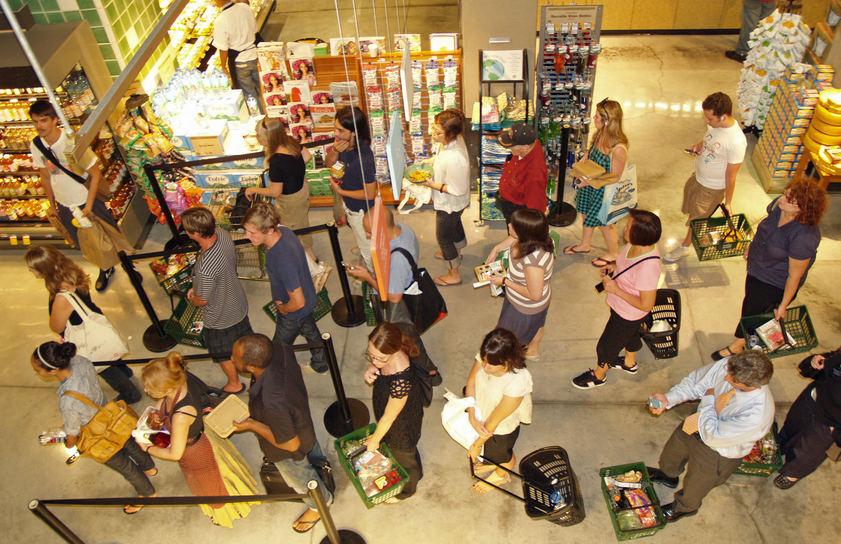Stocking up your emergency food pantry during the coronavirus pandemic
04/05/2020 / By Divina Ramirez

The outbreak of COVID-19 has caused shoppers to stock up on non-perishable food items like never before. Foods like canned meat, powdered milk, dried fruits, protein bars and pre-made sauces are the quickest to go, and for good reason. As the name implies, non-perishable food items can be stored for several months even without refrigeration.
Given community lockdowns and self-isolation protocols, it is important to stock up on foods, especially those that can last for a long time, to eliminate the necessity of frequent grocery trips and minimize the risk of spreading coronavirus.
Unfortunately, most non-perishable foods contain little to no nutrients due to high amounts of artificial preservatives. A strong immune system is the best defense against COVID-19. But consuming unhealthy foods for weeks at a time can compromise immunity and heighten the risk of infection.
Fortunately, you can weather out the pandemic without resorting to unhealthy foods by following safe food preservation methods. But before you grab the necessary materials, here are five essential foods to stockpile and preserve at home.
Fruits and vegetables
Fruits and vegetables are the most important foods to have on hand during a pandemic. Fresh produce contains antioxidants, proteins, fiber and micronutrients that enhance immunity. Fruits and vegetables also prevent nutrient deficiencies that cause a host of diseases. Stock up on hardy vegetables like broccoli, Brussels sprouts, asparagus and celery and bright fruits like berries, bananas, tomatoes and oranges. Hardy vegetables can last longer than leafy greens and tender vegetables, which you can pickle and freeze to preserve.
Meat, poultry and fish
Protein is an essential macronutrient supports bone development, metabolism and immunity. Common nutritious sources of high-quality protein include lean meat and fatty fishes like salmon, herring, mackerel, sardines and tuna. Plus, fatty fishes are excellent sources of heart-healthy omega-3 fatty acids. To prevent spoilage, divide meat and fish into freezer-safe containers and freeze. Sealed, uncooked meats should last up to three months. So as long as you use Ziploc bags and airtight containers, you don’t need to worry about spoiled meat, poultry and fish.
Whole grains
Whole grains like oats, quinoa, buckwheat and brown rice are excellent sources of dietary fiber that promote digestion and support cardiovascular health. Whole grains also contain good carbohydrates that the body uses to create energy. Regular consumption of whole grains can lower blood sugar and cholesterol as well. Plus, whole grains rarely go bad, especially if stored properly. Remember to avoid processed grains that also contain refined sugar, such as breakfast cereals, instant oatmeal and granola bars.
Beans and legumes
Beans and legumes are nutrient-dense alternatives to meat, poultry and fish. As rich sources of protein and antioxidants, beans and legumes support metabolism, immunity and tissue repair. Common varieties to stock up on include black beans, kidney beans, peas, peanuts, lentils and chickpeas.
Nuts and seeds
Almonds, walnuts, pistachios, sunflower seeds and pecans should also make up a considerable portion of the emergency stockpile. Nuts and seeds contain high amounts of antioxidants, omega-3 fatty acids, dietary fiber and micronutrients that aid various body functions. Plus, nuts and seeds can last quite a long time. Fill a couple of mason jars and store in a cool, dry place.
How to preserve food at home
It is never a good idea to buy commercially available canned fruits, vegetables and meat. For one thing, aluminum cans are known to have traces of bisphenol A (BPA), an industrial chemical that is typically used to create plastics and resins. Extensive studies on BPA show that the chemical can seep into foods and beverages, thus increasing the risk of reproductive disorders, cardiovascular disease, Type 2 diabetes and breast cancer.
Additionally, commercially available canned foods are also chock-full of artificial preservatives to prevent spoilage, discoloration and bacterial growth. Although preservatives extend shelf life, substances like sodium benzoate, potassium sorbate and butylated hydroxyanisole (BHA) can cause cognitive disorders, infertility and cancer.
Thankfully, you can avoid exposure to harmful chemicals and compounds by preserving foods by yourself. Follow the methods below to safely extend the shelf life of fruits, vegetables, nuts, oats and meat.
Minimal processing
Minimal processing involves storing fresh produce at room temperature. It is the easiest food preservation method as it does not require any preparation whatsoever. Root cellars are specifically created to store fresh produce. But don’t fret if you don’t have an actual root cellar. Any dry storage area that does not receive sunlight will do.
Minimal processing is best used to preserve vegetables that grow underground, such as potatoes, carrots, beets, onions and garlic.
Dehydrating
Food drying or dehydrating is another common food preservation method that involves extracting the water out of fruits, vegetables, meat and fish. This method can significantly extend the shelf life of foods and prevent spoilage, but only certain types of foods dehydrate well like small fishes, stalky vegetables, fruits and meat strips.
To dry food, you can use a commercial dehydrator or an oven on a low-heat setting. But you can also opt for the traditional method and simply hang the food under the sun as if you are drying clothes. Afterward, store the dried foods inside an airtight container and keep out of direct sunlight.
Canning
You don’t need to splurge on pricey pressure canners to can foods at home. To begin canning, grab your jars and add the foods to be canned. Do not fill the jar to the brim. Afterward, use a large pot and boil water. Drop a canning rack, plate or any material that can sit on the bottom of the pot, so the jars don’t sit directly on the bottom. Once that material is in place, add the jars and boil for up to 10 minutes. Let the jars cool afterward. To check if a jar has been sealed successfully, press down on the center of the lid. If it doesn’t budge, it’s properly sealed.
Foods that can be canned include beans, carrots, homemade jams, tomatoes, pickles and sauces. Once canned, foods can last for several months up to a year.
Home food preservation not only saves you money and trips to the supermarket but also encourages you to go green and organic by ditching processed canned foods.
A stocked pantry containing staples and ingredients to last weeks lets you stay well and healthy in case of food scarcity. Plus, there’s never a better time to learn how to safely preserve food than in the middle of a pandemic.
Sources include:
Tagged Under: clean food, emergency food, food collapse, food cures, food dehydrating, food is medicine, Food Preservation, food safety, food supply, Fresh, functional food, Gear, green living, grocery, home canning, Homestead, immune system, organics, prepping, prevention, starvation, Stockpile, survival, survival food, survival pantry, sustainable living



















